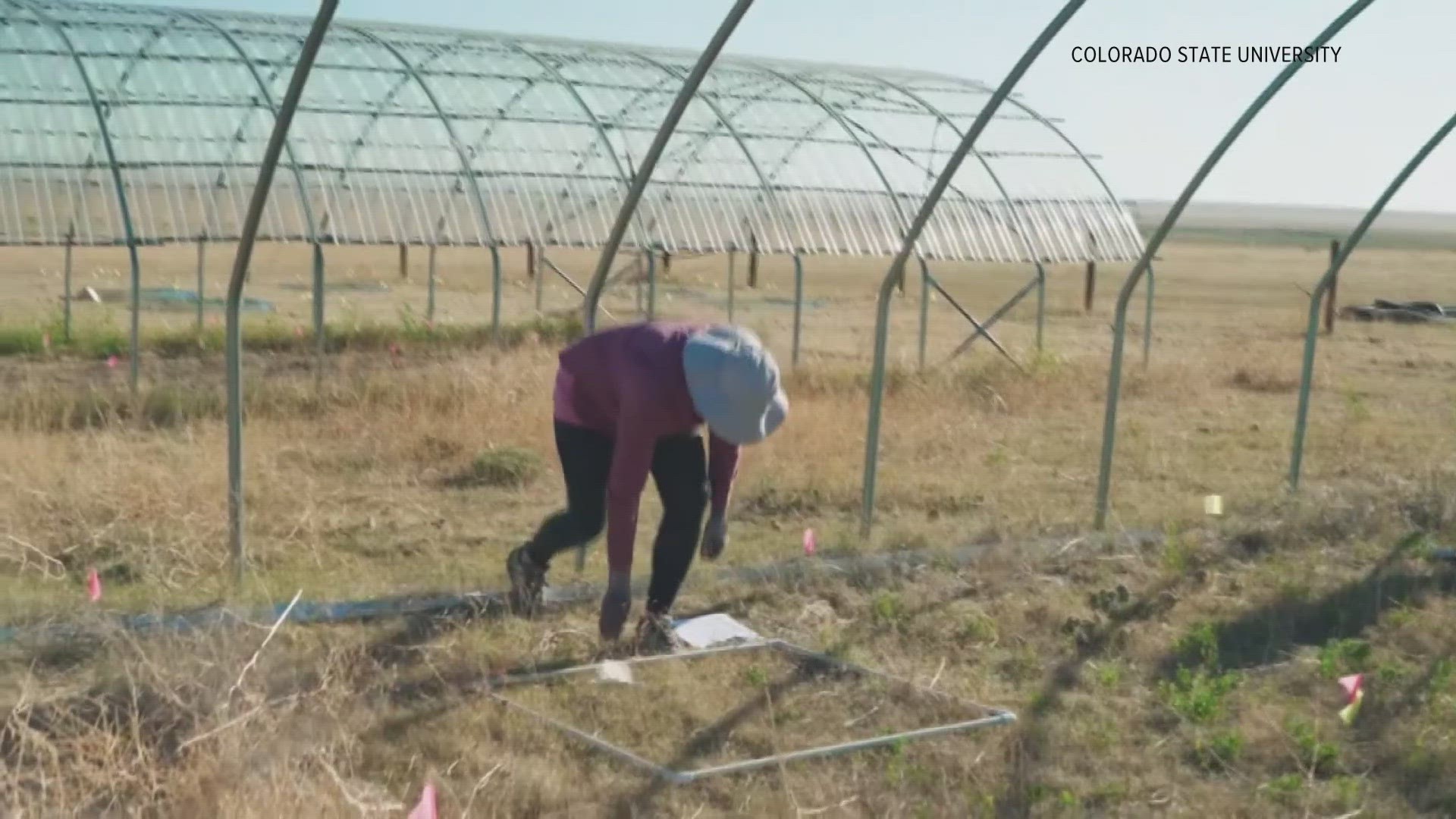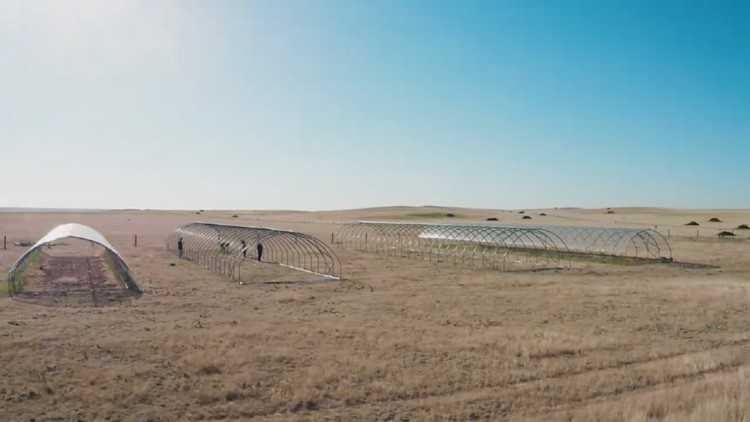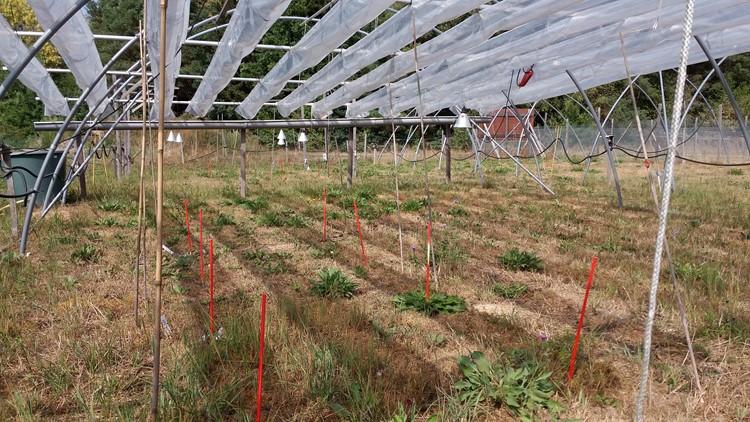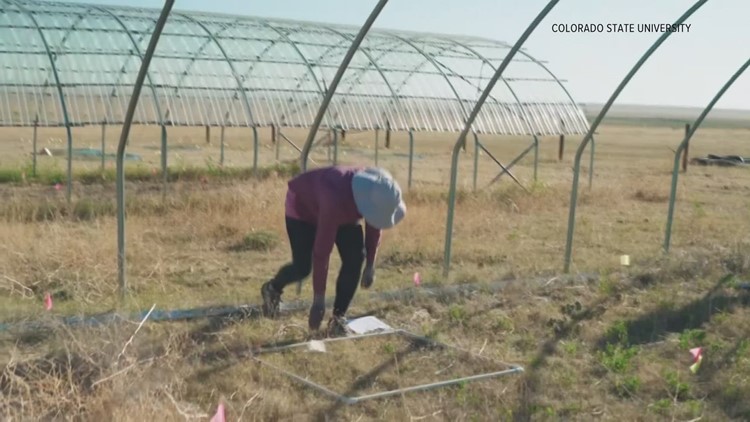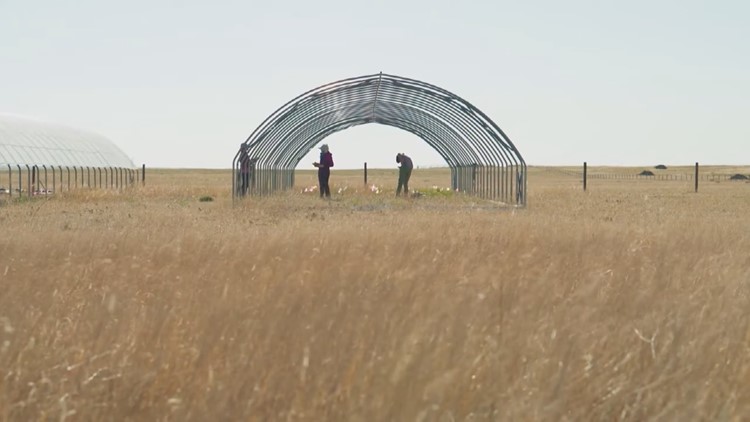NUNN, Colo. — Short-term drought causes extensive loss of grasslands and shrublands, according to new research from Colorado State University.
Drought is always coming and going from the landscape, so not all areas of the planet experience the same level of drought at the same time. That's why scientists needed to create their own artificial drought scenario for research purposes.
They used large structures called rain-out shelters to prevent naturally occurring precipitation from falling on the prairie. Plastic sheets on the roofs of the shelters could be adjusted to create different levels of drought conditions below.
"The effectiveness of those shelters has been proven to accurately mimic true drought conditions as they would occur naturally," said professor Melinda Smith, a grassland ecologist with CSU and principal investigator for the drought research project.
Rain-out study sites for grassland drought research
She set some shelters up at the Central Plains Experimental Range in Weld County near Nunn. The plastic roofs were adjusted to block out 66% of the precipitation, creating extreme drought conditions for an entire year.
The Weld County site was not the only location for this experiment. There were a total of 44 rain-out sites established, spanning six different continents -- all creating a drought scenario equivalent to what the North American Drought Monitor would characterize as "extreme."
The results of Smith's study showed that the loss of aboveground plant growth was 60% greater when short-term drought was extreme compared to the less severe droughts that have been more commonly experienced historically. Smith said that number is far greater than what was reported in previous studies.
“That’s quite concerning because we know that these drought experiments actually underestimate the impacts of natural drought, so it’s likely that those losses are even larger,” she said.
Smith said that could have devastating impacts to ranchers across the world, and could also be damaging to natural grassland species like birds, pronghorn and pollinating insects.
It also impacts the climate because, she said, grasslands store massive amounts of carbon. And 40% of the Earth’s landmass is covered in grasslands.
"Like with the shortgrass prairie, what’s fascinating about it is that more than 80% of the carbon is below ground," she said. "So if we get death of the plants, which is what we observed in our site, that leads to a cascading effect of below-ground carbon and accelerated loss of carbon from the system.”
She said the type of drought created in this experiment is considered a one-in-100-year drought, but that could start happening every two to five years as the climate continues to warm.
SUGGESTED VIDEOS: Colorado Climate

